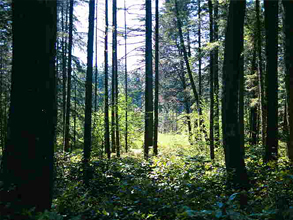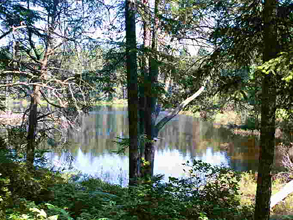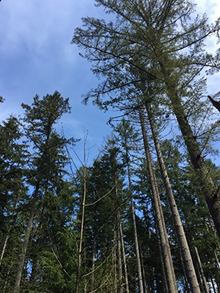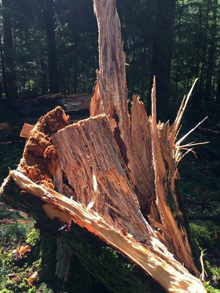Coulter Creek Heritage Park Forest Stewardship Plan  |  |
Forest Stewardship Planning is well underway for Coulter Creek Heritage Park. This is a 1200 acre park west of Port Orchard bordered by SW Lake Flora Road and Sunnyslope Road SW. This plan includes an assessment of the tree data that was collected and provides science-based recommendations for the ecological restoration of this forested park. The goals are to enhance forest tree health, promote greater plant diversity and improve wildlife habitat. Everyone is encouraged to read the draft plan and provide comments via email to Arno Bergstrom, Kitsap County Community Forester at Abergstr@co.kitsap.wa.us.
Click Here for the Forest Stewardship Plan for Coulter Creek Heritage Park.
Managing Laminated Root Rot In Kitsap County Parks  
Laminated root rot is a serious problem and is a disease spread by root to root contact that eventually kills Douglas fir and western hemlock. Because root rot occurs naturally, the goal is to manage the rate of infestation. This can be accomplished by breaking the link between healthy and diseased Douglas fir and western hemlock. Operational strategies include: thinning to reduce root to root contact; leaving the largest and healthiest trees standing; and under-plant root rot resistant conifers and hardwood trees. Western red cedar, white pine, red alder and big leaf maple seedlings will be planted at a rate of 50 to 150 trees per acre. In many cases there are already western red cedar, red alder and big leaf maple saplings established in areas with the heaviest root rot and these tree species can be expected as replacements. Research conducted by USDA, on the ecological foundations of biodiversity, support the promotion of habitat complexity in second, third and fourth growth forests. Studies conclude that conifers with rapid growth in the first 50-80 years of life have a better chance of living to become old-growth (200+ year old) trees.Forests owned by Kitsap County are currently not managed for health, safety, and habitat and ecosystem complexity/diversity. The proposed Forest Stewardship Plan is to manage County forests to create heterogeneity in ecosystem structure, composition and function that recreates the natural variability in forest conditions and processes that existed prior to settlement in the 1860's. Emphasis will be on a wider variety of forest attributes, or ecotypes, rather than tree-focused stand prescriptions historically used in forest silviculture. Ecotypes will represent larger functional groups of ecologically similar species; thereby reducing the number forest attributes that need attention. Wood production is not the emphasis, rather healthy diverse forests that provide high quality habitat, clean water and other ecosystem benefits is the intent. County forests will be managed as complex adaptive systems. A wider variety of stand structures and compositional possibilities will be featured at multiple spatial scales. Sampling, planning and prescriptions will focus on both heterogeneity and overall stand averages. Silvicultural treatments will re-create the variability of natural disturbance, both within and among stands, to allow the forest adapt to changing conditions. Multi-aged forests and variability in canopy conditions will promote canopy structure, tree growth and provide diverse wildlife habitat. Ecosystem management techniques will be applied including variable density thinning, variable retention harvesting to achieve complexity in County forests. Revenue generated annually from light thinning harvests is projected to cover the direct and indirect costs of plan implementation and management.
Forest Steward Training Videos:
| 
